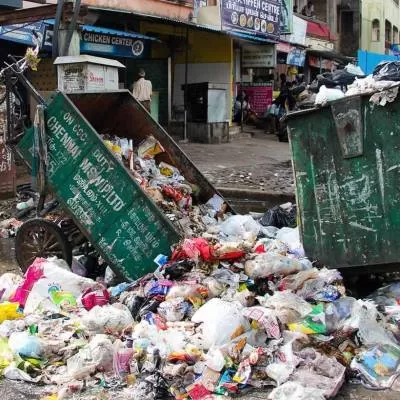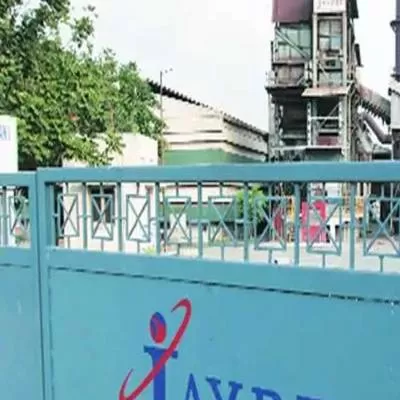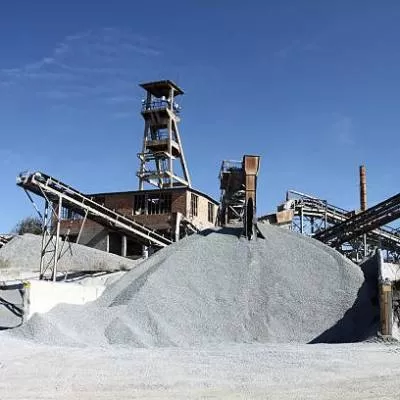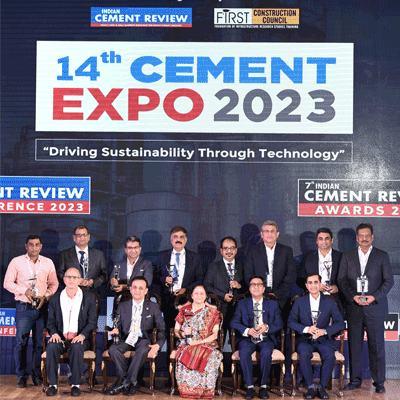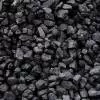- Home
- Building Material
- Cement
- Cementing Performances
Cementing Performances
Cement and construction go hand in hand. But does that automatically mean that the fortunes of the cement and construction industries wax and wane together? Charu Bahri has some answers as she presents expansion plans and key challenges faced by major players in the cement industry.
The real estate and infrastructure development boom of the past few years, a key driver of the increasing demand for cement, has given the cement industry a reason to cheer. What's more, the good times are expected to continue in FY11. Sumit Banerjee, Managing Director, ACC Ltd, is positive about industry trends and feels an overall growth of 9-10 per cent is likely. And Manoj Gaur, Managing Director, Jaypee Associates Ltd, believes that a good monsoon, stable governance and decisive steps towards fiscal discipline on the part of the government will ensure that the GDP grows by 8 per cent. In that case, the cement industry can expect to grow by 12 per cent.
Capex plans
Buoyed by the positive outlook, India Cements plans to invest around Rs 1,200 crore in capex over the next three years. “This includes an investment of Rs 500 crore in two captive power plants in Andhra Pradesh and Tamil Nadu, Rs 100 crore in a coal mining concession and further investment in our Rajasthan cement plant,” shares VM Mohan, Joint President -Corporate Finance, India Cements.
“Jaypee Associates Ltd's cost-effective organic growth, which involves setting up of greenfield plants and taking over, refitting with latest technology and re-commissioning old line plants, has proved to be the fastest way to expand capacity,” according to Gaur. “Our commissioned capacity increased from 14 mt in March 2009 to 22 mt in March 2010 and we are targeting a commissioned capacity of 34 mt by March 2011.”
For his part, OP Puranmalka, Whole-Time Director and Business Head, UltraTech Cement Ltd, reveals, “We plan to invest about $ 3 billion in India over the next five years to enhance our capacity by about 25 mtpa. This is required to maintain our market share.”
Shift in demand drivers
Industry estimates suggest that the housing market is driving up to 70 per cent of the demand for cement. But infrastructure development is rapidly catching up with real estate. Will it overtake housing as the prime driver? In Mohan's view, “The pace of infrastructure development is bound to have an impact on the ratio of demand drivers. Still, I'm not entirely sure that the housing market demands 70 per cent of the total demand for cement. I think this figure is at best an estimation as scientific data is not available.”
Puranmalka believes that increasing per capita income and urbanisation will ensure that housing continues to drive the major chunk of demand for cement in India. “However, with the government currently laying emphasis on infrastructure, we do envisage a tilt towards infrastructure. Cement consumption in infrastructure has increased from 18 per cent in FY05 to about 24 per cent in FY10," he adds. Banerjee optimistically observes, “We have seen that infrastructure development is growing at a faster pace than the housing sector and that trend is likely to continue.”
OPC in short supply?
Cement companies have responded to the optimistic outlook for the industry by drawing up major expansion plans. But despite all capacity hikes, Ordinary Portland Cement (OPC) is sometimes in short supply across the country. Why?
In response, Gaur cites an overall lack of awareness about the potential applications of Portland Pozzolana Cement (PPC) as a possible factor contributing to this state of affairs. “PPC has been approved for use in road construction, railways, real estate and is a must in the construction of dams [because of the effect of heat of hydration],” he explains. “One area where OPC has an edge over PPC is in the construction of high-rise buildings as OPC requires a shuttering period of 14 days vis-à-vis 21 days for PPC. So using OPC considerably reduces the cycle of constructing each floor. Overall, an ongoing exercise to educate the construction industry about the use of PPC would improve the situation.”
“We believe blended cement can be used for most infrastructure projects,” says Mohan. “Technically, blended cement can replace OPC for practically all purposes. However, with significant new cement capacities in place, the production of OPC is increasing owing to inadequate availability of blending material, which will meet the additional requirement of OPC from infrastructure projects.”
To this, Banerjee adds, “Concrete technologists acknowledge PPC as having unique properties enabling it to make concrete that is rendered superior to that made with ordinary cements in terms of durability, workability and resistance to aggressive environments. Two notable structures built with PPC are India's iconic Bhakra Nangal Dam and Malaysia's Petronas Towers. This is in addition to PPC being environment-friendly through mineral conservation and lower emissions of greenhouse gases.”
Healthy margins from PPC?
PPC is priced similar to OPC. This suggests greater margins for cement companies selling PPC as the fly ash used to manufacture it is supposed to be available free from power units. But industry honchos do not concur with this view. “It is no longer a reality that fly ash is available completely free,” says Puranmalka. “The transportation and handling charges associated with fly ash are major cost components. Also, there is a price difference in OPC and PPC from market to market.”
“The margins for cement companies selling PPC are higher than OPC, but you must realise that fly ash does not come free," weighs in Mohan. “It's meant to cost nothing, but cement plants do incur costs to procure and transport this material. In fact, the price of fly ash in Tamil Nadu increased by Rs 140 a tonne last October and by Rs 50 per tonne recently. We also incur expenditure on equipment used to collect the fly ash.”
“PPC is not cheap cement,” opines Banerjee. “Fly ash is not available free from power units. It is procured and a lot of effort is also put in to ensure that the fly ash used to make PPC is of good quality. Considerable investment is made by cement companies to install fly ash collection and handling facilities at power plants and in transporting this material to cement plants. This variety of cement is recognised world over as green environment-friendly cement, with a critical role to play in the task of mitigating the ill effects of climate change. The Indian cement industry is now gaining recognition for having the smallest carbon footprint among its counterparts in the world, mainly because of the production of blended cements of which the fly ash-based PPC is one variety.”
Power issues
Of the many challenges faced by cement companies, power scarcity is a significant issue. “Up to 1990, governments used to attract investments citing a power surplus in states,” says Gaur. “Then, the situation started to change and there is a huge difference between then and now. Nowadays, cement companies try to manage their own power requirements. That is our aim as well. We have 230 mw of captive thermal power plants that we plan to expand to 700 mw by next year. We also have 250 mw of DG backup. The idea is to be self-reliant.”
“We incurred a higher cost on power in the last financial as Tamil Nadu and Andhra Pradesh experienced severe power cuts,” shares Mohan. “This forced us to buy expensive power from outside. Coal is a key input in the production of cement and India Cements will need to import 700,000 to 800,000 tonne of coal annually to meet its requirements for cement production and further quantity for power generation as and when the thermal plants are commissioned. We would like to have greater control on the supply chain of this important input and reduce fuel costs. That is why we are acquiring coal mining rights in Indonesia, to meet our coal needs for cement and power generation.”
Geographical divide
The cement industry is divided into five segments: North, South, East, West and Central. Each zone has its own peculiarities and growth rates. According to Gaur, “If you can afford it, it is preferable to have a presence in each zone. Pan-Indian players benefit from harnessing the potential of every zone. The commissioning of our Andhra Pradesh plant (South Zone) by March 2011 will make us a pan-Indian player.”
Lower growth rates in southern India compared to the north have led India Cements, the leading player in southern India, to draw up plans to expand in the north. “We are currently setting up a 1.5 million tonne greenfield cement plant in Rajasthan,” says Mohan. “Recently, we also established a grinding unit in Maharashtra. We are aware of the benefits of geographically diversifying our business and to this end we are in the process of evolving as a pan-Indian company.”
The amalgamation of UltraTech Cements, which is present in the West and South, and Grasim, which has a presence in the North, East and South, is also reflective of the trend towards establishing a pan-Indian presence. “Now, with the consolidation of the cement businesses, we will soon have a pan-India presence,” affirms Puranmalka.
Other concerns
Lower net price realisation is another concern, considering that the average net price realisation in FY10 was Rs 2,754 a tonne, down from Rs 3,056 a tonne in the previous year. To this, Mohan says, “We hope the players in the cement industry realise fast that cutting prices is not going to result in an increase in volumes. You need a minimum margin to survive in the cement industry.”
ACC Ltd's growth in sales in percentage has slowed down after 2007. Speaking of the factors causing this slowdown, Banerjee explains, “We were constrained by slow capacity addition and transport bottlenecks in some of our plants. But with new capacity added, we are likely to come out of that trend this year.”
Beyond doubt, the construction industry will hope that these pressing issues are resolved without delay.
Indian Cement Industry: Top of the Pack?
India is the second largest cement producing company in the world. According to Mohan, “India produces the best cement in the world. Most of our cement plants are based on modern technology; they do not date back five to six decades as do some plants in the West. Adjusting the raw material mix helps produce cement suitable for specific purposes, such as coastal construction. Most cement companies can produce different varieties to meet the needs of local demand."
The infrastructure and real estate development boom has spurred the need for high strength grade concrete. Clients are looking for consistent quality and outstanding durability backed by reliable technical assurance and customer services. Little wonder then, that leading cement companies are going all out to adopt modern technology in their cement plants. Banerjee believes that ACC Ltd's pioneering efforts to offer commercial ready-mix concrete (RMC) in Mumbai in 1993 and ongoing endeavours including the introduction of bulk cement handling facilities have helped redefine the pace and quality of construction activity in metropolitan cities and in mega infrastructure projects. “We were the first to supply high performance concrete of grade M 75 in India that was used in the JJ Flyover project in Mumbai," he says. “New-age construction such as the Delhi Metro and Bengaluru International Airport also reflect the contemporary engineering excellence of ACC cement and RMC." In the case of ACC Ltd, the group also draws considerable guidance from its largest equity shareholder, the Holcim group, by way of learning from its best practices.
Explaining that cement companies need to be futuristic, foreseeing the needs of the industry beforehand, Puranmalka says, “We ventured into the supply of RMC as far back as 1998. We are producing not only high strength concrete up to M80 grade for various infrastructure projects but other varieties like self-compacting concrete, high-volume fly ash cement, coloured concrete and fibre concrete for various construction needs. We also manufacture RMC as per project or customer specifications."
Quick Bytes
• Cement companies have responded to the optimistic outlook for the industry by drawing up major expansion plans.
• Infrastructure development is rapidly emerging as the major driver for demand.
• Power scarcity is one of the most significant challenges faced by cement companies.
- Construction
- Update
- Portal
- Magazine
- India
- July
- 2010
- World
- Cement
- wax
- wane
- real estate
- infrastructure
- Sumit Banerjee
- ACC
- Manoj Gaur
- Jaypee
- GDP
- investment
- Andhra Pradesh
- Tamil Nadu
- coal
- Mining
- Rajasthan
- VM Mohan
- technology
- OP Puranmalka
- UltraTech
- urbanisation
- housing
- OPC
- PPC
- Concrete
- Bhakra
- Nangal
- Dam
- Malaysia
- Peronas
- Towers
- climate
- change
- Power
- generation
- Indonesia
- grinding
- Maharashtra
- Grasim
- RMC
- JJ Flyover
- Bengaluru
- International
- Airport
- scarcity
Cement and construction go hand in hand. But does that automatically mean that the fortunes of the cement and construction industries wax and wane together? Charu Bahri has some answers as she presents expansion plans and key challenges faced by major players in the cement industry. The real estate and infrastructure development boom of the past few years, a key driver of the increasing demand for cement, has given the cement industry a reason to cheer. What's more, the good times are expected to continue in FY11. Sumit Banerjee, Managing Director, ACC Ltd, is positive about industry trends and feels an overall growth of 9-10 per cent is likely. And Manoj Gaur, Managing Director, Jaypee Associates Ltd, believes that a good monsoon, stable governance and decisive steps towards fiscal discipline on the part of the government will ensure that the GDP grows by 8 per cent. In that case, the cement industry can expect to grow by 12 per cent. Capex plans Buoyed by the positive outlook, India Cements plans to invest around Rs 1,200 crore in capex over the next three years. “This includes an investment of Rs 500 crore in two captive power plants in Andhra Pradesh and Tamil Nadu, Rs 100 crore in a coal mining concession and further investment in our Rajasthan cement plant,” shares VM Mohan, Joint President -Corporate Finance, India Cements. “Jaypee Associates Ltd's cost-effective organic growth, which involves setting up of greenfield plants and taking over, refitting with latest technology and re-commissioning old line plants, has proved to be the fastest way to expand capacity,” according to Gaur. “Our commissioned capacity increased from 14 mt in March 2009 to 22 mt in March 2010 and we are targeting a commissioned capacity of 34 mt by March 2011.” For his part, OP Puranmalka, Whole-Time Director and Business Head, UltraTech Cement Ltd, reveals, “We plan to invest about $ 3 billion in India over the next five years to enhance our capacity by about 25 mtpa. This is required to maintain our market share.” Shift in demand drivers Industry estimates suggest that the housing market is driving up to 70 per cent of the demand for cement. But infrastructure development is rapidly catching up with real estate. Will it overtake housing as the prime driver? In Mohan's view, “The pace of infrastructure development is bound to have an impact on the ratio of demand drivers. Still, I'm not entirely sure that the housing market demands 70 per cent of the total demand for cement. I think this figure is at best an estimation as scientific data is not available.” Puranmalka believes that increasing per capita income and urbanisation will ensure that housing continues to drive the major chunk of demand for cement in India. “However, with the government currently laying emphasis on infrastructure, we do envisage a tilt towards infrastructure. Cement consumption in infrastructure has increased from 18 per cent in FY05 to about 24 per cent in FY10, he adds. Banerjee optimistically observes, “We have seen that infrastructure development is growing at a faster pace than the housing sector and that trend is likely to continue.” OPC in short supply? Cement companies have responded to the optimistic outlook for the industry by drawing up major expansion plans. But despite all capacity hikes, Ordinary Portland Cement (OPC) is sometimes in short supply across the country. Why? In response, Gaur cites an overall lack of awareness about the potential applications of Portland Pozzolana Cement (PPC) as a possible factor contributing to this state of affairs. “PPC has been approved for use in road construction, railways, real estate and is a must in the construction of dams [because of the effect of heat of hydration],” he explains. “One area where OPC has an edge over PPC is in the construction of high-rise buildings as OPC requires a shuttering period of 14 days vis-à-vis 21 days for PPC. So using OPC considerably reduces the cycle of constructing each floor. Overall, an ongoing exercise to educate the construction industry about the use of PPC would improve the situation.” “We believe blended cement can be used for most infrastructure projects,” says Mohan. “Technically, blended cement can replace OPC for practically all purposes. However, with significant new cement capacities in place, the production of OPC is increasing owing to inadequate availability of blending material, which will meet the additional requirement of OPC from infrastructure projects.” To this, Banerjee adds, “Concrete technologists acknowledge PPC as having unique properties enabling it to make concrete that is rendered superior to that made with ordinary cements in terms of durability, workability and resistance to aggressive environments. Two notable structures built with PPC are India's iconic Bhakra Nangal Dam and Malaysia's Petronas Towers. This is in addition to PPC being environment-friendly through mineral conservation and lower emissions of greenhouse gases.” Healthy margins from PPC? PPC is priced similar to OPC. This suggests greater margins for cement companies selling PPC as the fly ash used to manufacture it is supposed to be available free from power units. But industry honchos do not concur with this view. “It is no longer a reality that fly ash is available completely free,” says Puranmalka. “The transportation and handling charges associated with fly ash are major cost components. Also, there is a price difference in OPC and PPC from market to market.” “The margins for cement companies selling PPC are higher than OPC, but you must realise that fly ash does not come free, weighs in Mohan. “It's meant to cost nothing, but cement plants do incur costs to procure and transport this material. In fact, the price of fly ash in Tamil Nadu increased by Rs 140 a tonne last October and by Rs 50 per tonne recently. We also incur expenditure on equipment used to collect the fly ash.” “PPC is not cheap cement,” opines Banerjee. “Fly ash is not available free from power units. It is procured and a lot of effort is also put in to ensure that the fly ash used to make PPC is of good quality. Considerable investment is made by cement companies to install fly ash collection and handling facilities at power plants and in transporting this material to cement plants. This variety of cement is recognised world over as green environment-friendly cement, with a critical role to play in the task of mitigating the ill effects of climate change. The Indian cement industry is now gaining recognition for having the smallest carbon footprint among its counterparts in the world, mainly because of the production of blended cements of which the fly ash-based PPC is one variety.” Power issues Of the many challenges faced by cement companies, power scarcity is a significant issue. “Up to 1990, governments used to attract investments citing a power surplus in states,” says Gaur. “Then, the situation started to change and there is a huge difference between then and now. Nowadays, cement companies try to manage their own power requirements. That is our aim as well. We have 230 mw of captive thermal power plants that we plan to expand to 700 mw by next year. We also have 250 mw of DG backup. The idea is to be self-reliant.” “We incurred a higher cost on power in the last financial as Tamil Nadu and Andhra Pradesh experienced severe power cuts,” shares Mohan. “This forced us to buy expensive power from outside. Coal is a key input in the production of cement and India Cements will need to import 700,000 to 800,000 tonne of coal annually to meet its requirements for cement production and further quantity for power generation as and when the thermal plants are commissioned. We would like to have greater control on the supply chain of this important input and reduce fuel costs. That is why we are acquiring coal mining rights in Indonesia, to meet our coal needs for cement and power generation.” Geographical divide The cement industry is divided into five segments: North, South, East, West and Central. Each zone has its own peculiarities and growth rates. According to Gaur, “If you can afford it, it is preferable to have a presence in each zone. Pan-Indian players benefit from harnessing the potential of every zone. The commissioning of our Andhra Pradesh plant (South Zone) by March 2011 will make us a pan-Indian player.” Lower growth rates in southern India compared to the north have led India Cements, the leading player in southern India, to draw up plans to expand in the north. “We are currently setting up a 1.5 million tonne greenfield cement plant in Rajasthan,” says Mohan. “Recently, we also established a grinding unit in Maharashtra. We are aware of the benefits of geographically diversifying our business and to this end we are in the process of evolving as a pan-Indian company.” The amalgamation of UltraTech Cements, which is present in the West and South, and Grasim, which has a presence in the North, East and South, is also reflective of the trend towards establishing a pan-Indian presence. “Now, with the consolidation of the cement businesses, we will soon have a pan-India presence,” affirms Puranmalka. Other concerns Lower net price realisation is another concern, considering that the average net price realisation in FY10 was Rs 2,754 a tonne, down from Rs 3,056 a tonne in the previous year. To this, Mohan says, “We hope the players in the cement industry realise fast that cutting prices is not going to result in an increase in volumes. You need a minimum margin to survive in the cement industry.” ACC Ltd's growth in sales in percentage has slowed down after 2007. Speaking of the factors causing this slowdown, Banerjee explains, “We were constrained by slow capacity addition and transport bottlenecks in some of our plants. But with new capacity added, we are likely to come out of that trend this year.” Beyond doubt, the construction industry will hope that these pressing issues are resolved without delay. Indian Cement Industry: Top of the Pack? India is the second largest cement producing company in the world. According to Mohan, “India produces the best cement in the world. Most of our cement plants are based on modern technology; they do not date back five to six decades as do some plants in the West. Adjusting the raw material mix helps produce cement suitable for specific purposes, such as coastal construction. Most cement companies can produce different varieties to meet the needs of local demand. The infrastructure and real estate development boom has spurred the need for high strength grade concrete. Clients are looking for consistent quality and outstanding durability backed by reliable technical assurance and customer services. Little wonder then, that leading cement companies are going all out to adopt modern technology in their cement plants. Banerjee believes that ACC Ltd's pioneering efforts to offer commercial ready-mix concrete (RMC) in Mumbai in 1993 and ongoing endeavours including the introduction of bulk cement handling facilities have helped redefine the pace and quality of construction activity in metropolitan cities and in mega infrastructure projects. “We were the first to supply high performance concrete of grade M 75 in India that was used in the JJ Flyover project in Mumbai, he says. “New-age construction such as the Delhi Metro and Bengaluru International Airport also reflect the contemporary engineering excellence of ACC cement and RMC. In the case of ACC Ltd, the group also draws considerable guidance from its largest equity shareholder, the Holcim group, by way of learning from its best practices. Explaining that cement companies need to be futuristic, foreseeing the needs of the industry beforehand, Puranmalka says, “We ventured into the supply of RMC as far back as 1998. We are producing not only high strength concrete up to M80 grade for various infrastructure projects but other varieties like self-compacting concrete, high-volume fly ash cement, coloured concrete and fibre concrete for various construction needs. We also manufacture RMC as per project or customer specifications. Quick Bytes • Cement companies have responded to the optimistic outlook for the industry by drawing up major expansion plans.• Infrastructure development is rapidly emerging as the major driver for demand.• Power scarcity is one of the most significant challenges faced by cement companies.



